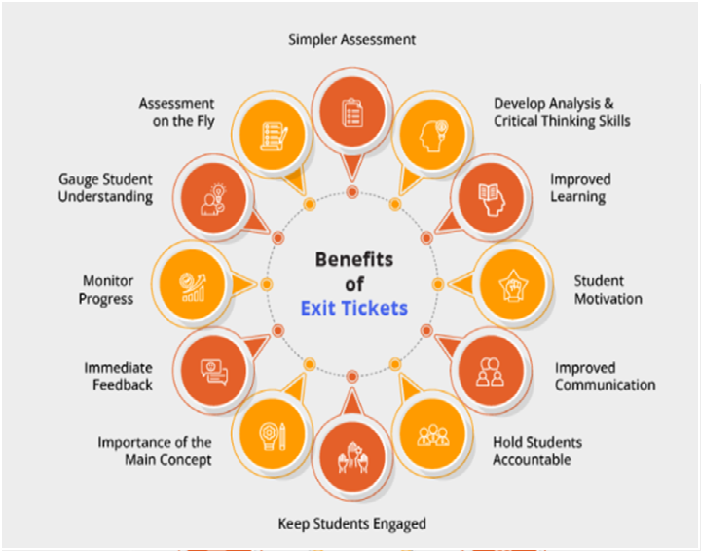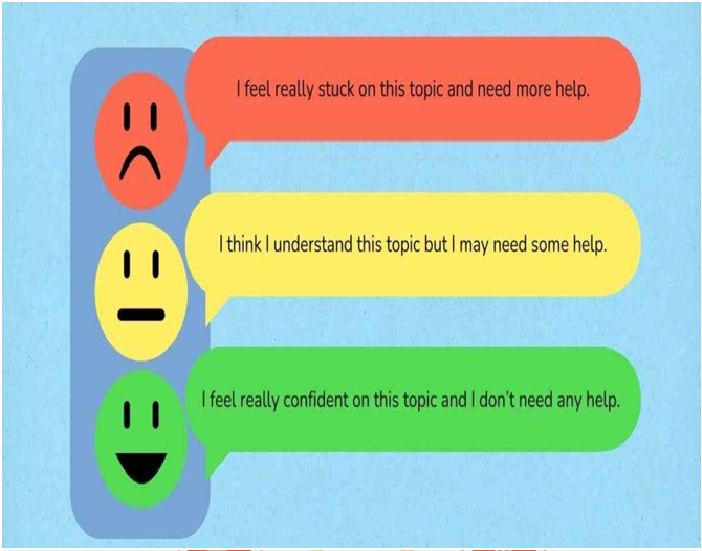One of the main helpful teaching strategies that might assist you in answering any of your classroom concerns is the usage of exit tickets. You may create a strong classroom community where students feel heard and encouraged by using the feedback from exit tickets. To efficiently prepare the class for the following day, exit tickets can assist you in assessing student comprehension. Therefore, here is everything you need to know about exit tickets and several ways they might help you and your pupils in the classroom.
What Is An Exit Ticket?
A quick informal evaluation task called an exit ticket is usually distributed to pupils after the class. An exit ticket’s primary function is to evaluate pupils’ comprehension of the main ideas and objectives promptly. They enable the identification and fill-in of knowledge gaps by giving teachers and students rapid feedback. As they go on to the next portion of their day, each student responds to the exit ticket question verbally or on the slip.

Source: extramarks.com
Alternatively, you may ask for their responses just before the following task so you can go over them either before or after your pupils get out of class. As educators with an offline or online Bachelor’s degree, consider posting your exit question on the board so that the entire class can see it if your pupils are younger or if you prefer this teaching strategy’s spoken delivery. Before the class ends, you may ask them for their responses, or you can relieve some pressure by asking them to share as they leave.
5 Exit Ticket Ideas You Can Use To Assess Student Understanding
Here are a few exit ticket ideas used by experts to gauge student progress and create a more engaging classroom:
1. Plan Ahead
As you normally would, schedule the lesson for the day and decide which main goal you want to cover and evaluate. Develop the exit ticket according to the goal, coming up with a problem or a few questions that relate to the material your pupils have learned so far. This exit ticket is ideal if you’re trying to figure out which classes need to be reviewed. The responses from your pupils will help you make sure they fully comprehend the subject matter. Next year, when you are taking the same class, it can also assist you decide where to concentrate your attention.
2. Use Emojis
Emoji-based feedback requests are a fun method to keep your pupils interested in the lessons you’re teaching them. These recognizable tiny faces may immediately liven up their study day and improve their comprehension of the subject matter. Emojis are useful in many situations. Try printing a few different faces on notecards and asking students to circle the lesson they learned that day.

Source: thirdspacelearning.com
If you’re feeling very daring, you may even advise them to sketch the emoji that most accurately captures how they’re feeling. If you go this way, just be prepared to receive some unusual submissions. Don’t, however, limit yourself to emojis! Don’t forget to include a question that asks each student to justify their choice. This will help you comprehend their thoughts and comprehension of the subject matter better.
3. Present The Exit Tickets
After class, give the students their departure ticket. These can be filled up on paper slips, on little whiteboards, or, if that’s not possible, online. Written or spoken hinge questions for the entire class might likewise be used as the exit ticket. In addition to finishing the issue or questions on the exit ticket, students can evaluate their comprehension.
Great exit tickets are made using sticky notes! For convenient study, your students can affix them to your desk or hang them on bulletin boards. You don’t need to spend time putting the prompts on each student’s sticky note every day, so don’t stress. The ticket wording may be printed directly onto your notes!
4. Review Responses
Gather the student answers either digitally (if the kids finished the tickets on a digital device) or manually. Examine the tickets to see if your pupils comprehend the material and to determine who needs more help. Because you are positively and immediately soliciting their opinions, students will feel encouraged and appreciated.
Additionally, just like other exit tickets, students may focus more throughout class if they are aware that these questions will be asked. Ensure that your pupils are aware that sharing exit cards is a secure place. They won’t face consequences for their writing, so they can be completely truthful. Keeping that in mind, keep in mind that you can’t give your full effort in every class.
5. Use Data For Future Planning
Keep note of the student’s progress, including who completes the task successfully and who needs further assistance. Give your pupils two to three minutes to jot down any thoughts they may have regarding today’s instruction as the class or period concludes.
You might ask them to write down anything they recall learning during the class, or you can just ask them to write anything that comes to mind. This recap of what they have learned will aid in helping them remember the ideas. Before sending them in, students can even discuss their brain dump with a classmate or small group. Another way to learn is to hear what other students understood and how they retained the material.
Find New Ways To Keep Your Students Engaged
A fantastic approach to end the day and assess your student’s progress is using exit tickets. Exit tickets are potential rapid evaluation methods that can help your students learn deeply and differently in your classroom. If you have pursued Online Degree Courses and are looking for ways to keep your classroom engaged and assess student learning, try out the above-mentioned techniques.



